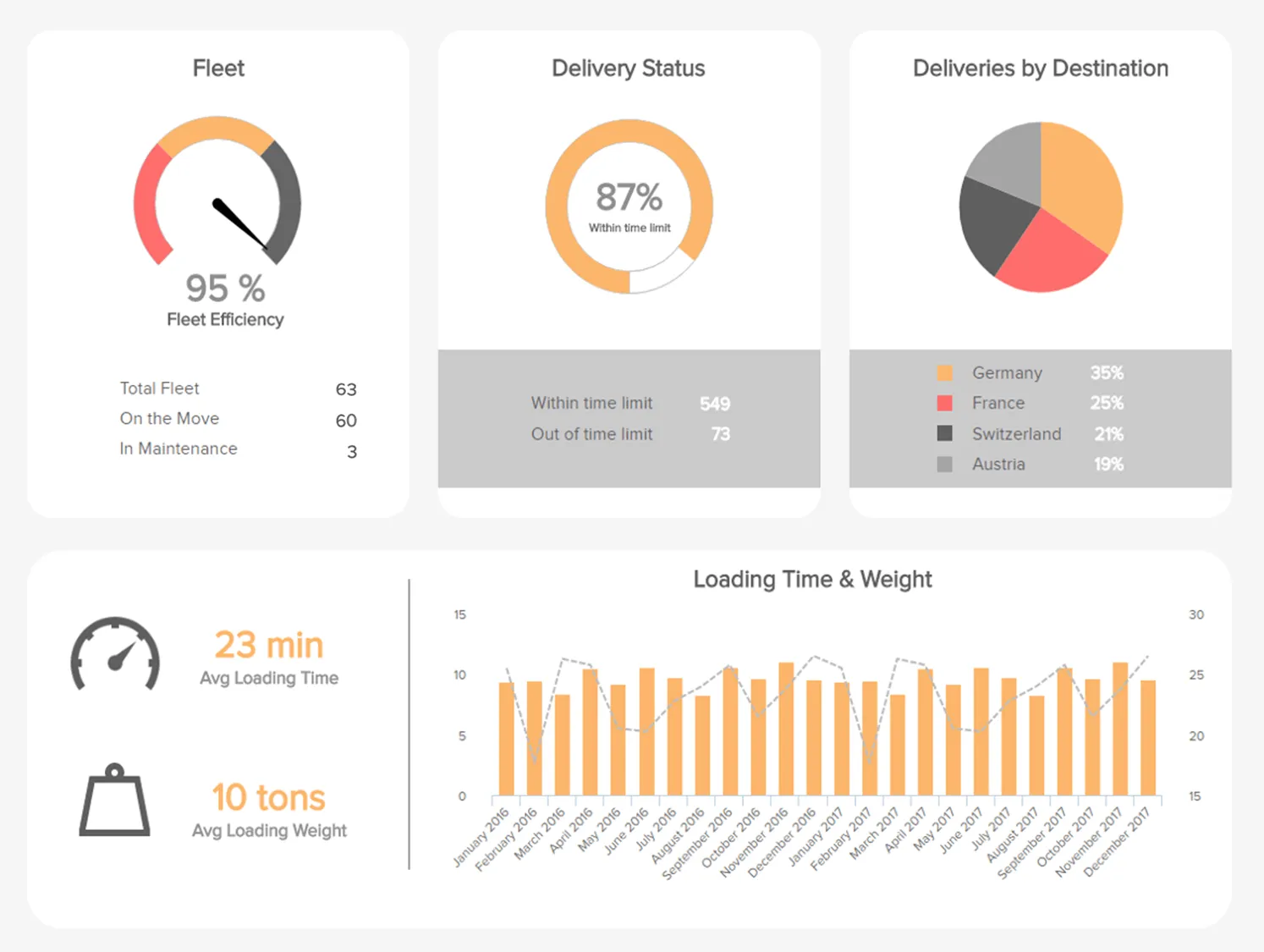

A modern logistics hub is a place where thousands of operations take place simultaneously. Trucks deliver new goods, the products are loaded, and automatic vehicles distribute the boxes and store them in appropriate compartments. At the same time, a huge amount of data is generated. All these processes don’t create chaos but, conversely, create a tranquil harmony. Logistics dashboards play an important role in inventory and distribution management. This article explains why they are becoming a game-changer in the industry and boost operational efficiency.
A logistics dashboard is a digital terminal designed to observe and control supply chain processes. Their main feature is real-time access to tons of data: from inventory levels to delivery schedules. You literally have information about all the aspects of your logistics in one place. The data is displayed not in boring tables but in a clear and engaging format. It can be easily customized for your specific needs and present KPIs that are crucial for the business.
Obviously, the primary role of monitoring systems is to facilitate control over all operations. They collect data and convert it into a simple form. These two functions are the essence of the technology. With the displayed information, you can see the existing trends, predictions, and even room for improvement. As a result, managers can make well-informed decisions and correct different aspects to prevent any problems, shortages, late deliveries, etc. Automatic analysis of everything that happens in and outside the warehouse gives you a competitive advantage over those who don’t have a clear picture of their operations.

Now, let’s dive deeper into the specifics of logistics dashboards. Below, we’ll mention every function of this technology and see how it works. These are the processes performed:
When you put together all these extremely useful features, you’ll get a universal tool that is indispensable for decision-making. It will help you to optimize your work quickly and effectively. And fast decisions are what allows you to get ahead of your competitors.
Logistics dashboards process a huge amount of data and give us valuable insights. But how specifically can we use the provided information? Here are several examples:
Every company that stores and distributes its products knows that logistics is one of the most important spheres of the business. It makes sales possible and allows you to occupy new markets. Dashboards can bring a lot of benefits to this sphere. Here are some of them:
To wrap up everything that was said above, it is necessary to discuss the universal nature of logistics dashboards. They can be tailored to any company and any scale and provide relevant insights no matter what business you are in. This technology improves a wide range of operations and becomes a vital component in the modern business toolkit. It represents the future of logistics, and there is no doubt that its importance to business will only increase.